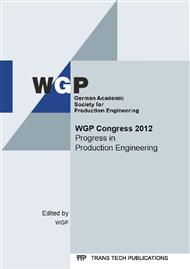p.3
p.17
p.29
p.41
p.55
p.63
p.75
p.89
p.99
Modeling and Simulation of the Machining of Unidirectional CFRP
Abstract:
The machining process of carbon fiber reinforced plastics is very complex due to its inhomogeneous material structure and anisotropic properties. Experimental investigation can be very demanding and time consuming because of the different fiber/matrix compositions and the influence of the fiber volume content which needs to be considered. In this work milling of unidirectional CFRP was simulated using two different material models with implicit and explicit description of fiber and matrix. The objective is to improve the knowledge of the physical mechanism of the cutting process and to predict the cutting forces and surface damage. For this purpose machining of unidirectional CFRP with fiber orientations 90°, 0°, +45° and-45° was simulated, verified by experiments. A significant influence of the fiber orientation on all determined variables was found. The cutting mechanism is dominated by matrix crushing for the fiber orientations 90°, 0° and +45°. Surface damage is caused by either matrix cracking and/or failure of fiber/matrix interface and is occurring in orientations 90° and-45° only. Additionally the evolution of a saw-tooth shaped surface could be identified for the-45° orientation.
Info:
Periodical:
Pages:
55-62
Citation:
Online since:
April 2014
Authors:
Price:
Сopyright:
© 2014 Trans Tech Publications Ltd. All Rights Reserved
Share:
Citation:


